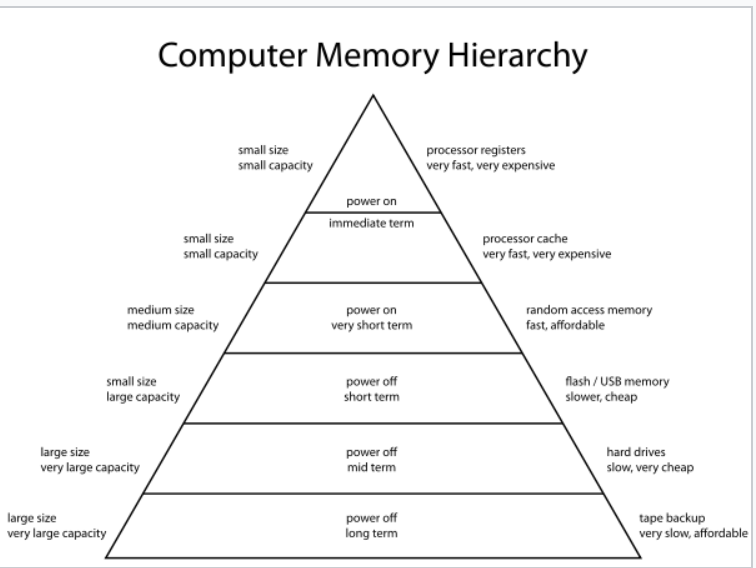Memory
When a software program uses memory there are two regions of memory they use, (apart from the space used to load the bytecode), Stack and Heap memory.
Memory Hierarchy
Memory hierarchy is the pyramid formed when we stratify different implementations of memory storage and categorize them according to the level of abstraction they exist at.
- ex. implementations are anything from circuit-level processor resistors and registers to hard drives and USB sticks.

The main idea of memory hierarchy is that the storage at one level serves as a cache for storage at the next lower level
Because of physical laws, larger storage devices are slower than smaller storage devices.
- ex. a disk drive on a typical system might be 100 times larger than the main memory, but might take 10,000,000x longer to read a word from disk than from memory. Similarly a typical register file (CPU) stores only a few hundred bytes of information, as opposed to millions of bytes in main memory. However, the processor can read data from the register file almost 100x faster than from memory.
Memory Leak
in languages without garbage collection, memory leaks occur when we fail to free up memory (deallocate) after a pointer no-longer serves its purpose (such as when we never reference that variable again until end of execution)
Memory Cell
The memory cell is the fundamental building block of memory. The memory cell itself is an electronic circuit that stores a single bit of binary information (ie. 0 or 1)
- This is achieved by sending either a high voltage signal (1) or low signal (0)
Children
Backlinks